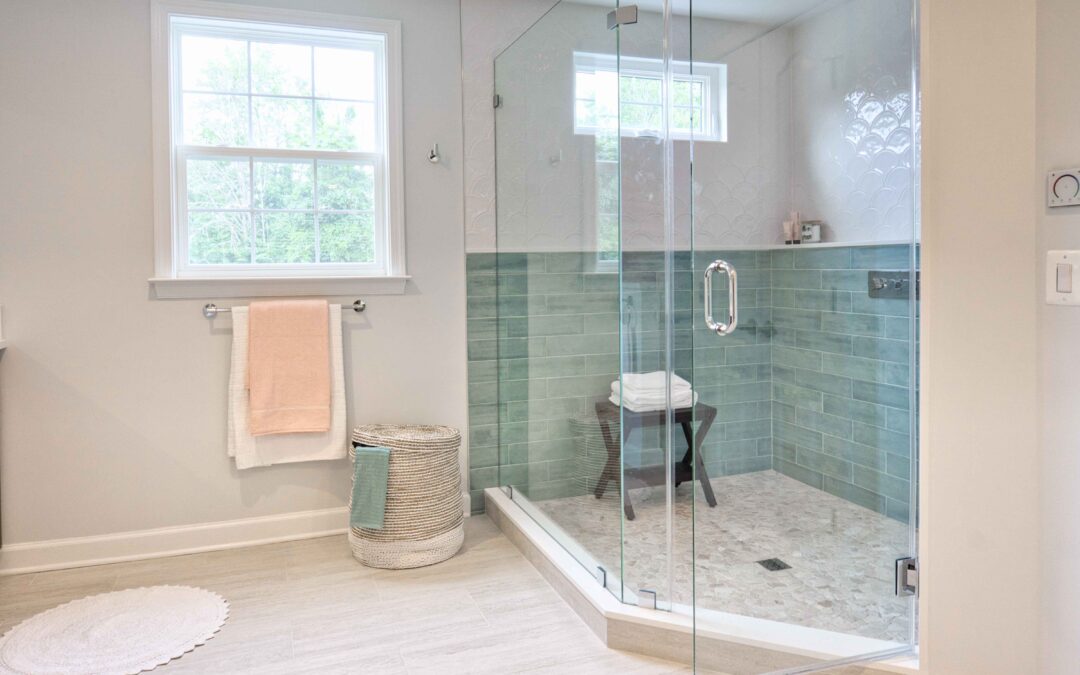Embarking on a bathroom remodel can be a rewarding yet complex project that requires thoughtful planning and attention to detail. Whether you’re updating fixtures, replacing flooring, or installing a new shower, working with a dependable remodeling company is key to achieving your vision. In this guide, we’ll walk you through the essential steps—from setting a budget to choosing the right materials and executing the renovation process—to help you create the perfect bathroom space efficiently and effectively.
Planning Your Bathroom Remodel
Before delving into the renovation process, it is important to meticulously plan every aspect of your bathroom remodel to guarantee a successful and efficient transformation. Start by envisioning the desired end goal. Consider factors such as layout, functionality, and design aesthetics. Assess the current space and identify what elements need to be updated or replaced. Create a detailed plan outlining the changes you wish to make, whether installing a new shower, replacing outdated fixtures, or changing the flooring.
Moreover, think about the practical aspects of the renovation. Consider the plumbing and electrical requirements for your new fixtures and appliances. Ensure that your plan complies with building codes and regulations to avoid issues during remodeling. In addition, establish a timeline for the project, setting realistic deadlines for each renovation phase.
Setting Your Budget
Establishing a comprehensive and realistic budget is fundamental to guarantee a smooth and successful renovation process when initiating a bathroom remodel. Establishing a budget helps you prioritize expenses and remain on track with your financial goals. Here are three key points to consider when setting your budget:
– Research Costs: Research the average bathroom remodeling costs in your locality. Factors like the size of your bathroom, desired upgrades, and quality of materials can impact the overall cost. Gathering this information will give you a practical understanding of what to anticipate.
– Contingency Fund: Setting aside a reserve fund of about 10-20% of your total budget for unforeseen expenses that may occur during the renovation is essential. Unexpected issues, such as water damage or structural repairs, can quickly accumulate, so having a buffer will help alleviate financial stress.
– Prioritize Essentials: Identify the essential elements of your new bathroom, such as a new shower, updated plumbing, or improved lighting. Allocating a significant portion of your budget to these critical items ensures you achieve the primary objectives of your remodel.
Choosing Materials and Fixtures
Researching and selecting the appropriate materials and fixtures is essential in ensuring a successful and visually appealing bathroom remodel project. When choosing materials, consider durability, moisture resistance, and aesthetics. For flooring, options such as ceramic tiles, vinyl, or natural stone can provide functionality and style. Walls can be enhanced with waterproof paint, beadboard, or tile backsplashes.
Fixtures play a pivotal role in your bathroom’s functionality and aesthetics. Faucets, showerheads, and hardware should complement the overall design theme. Consider options like brushed nickel for a modern look or oil-rubbed bronze for a more traditional feel. When selecting a bathtub or shower, consider the space available and whether a freestanding tub, walk-in shower, or a combination suits your needs best.
Lighting fixtures are another important consideration. A mix of overhead, vanity, and accent lighting can create a well-lit and inviting space. Remember to choose energy-efficient fixtures to save on electricity costs in the long run.
Executing the Remodeling Process
To start the remodeling process effectively, creating a detailed project timeline outlining each step from demolition to final touches is essential. This timeline serves as a roadmap for the entire renovation, guaranteeing that each task is completed efficiently and in the correct order. Here are three vital steps to executing the remodeling process smoothly:
– Demolition and Preparation: Begin by clearing out the existing fixtures and structures in the bathroom. This includes removing old tiles, cabinets, and plumbing fixtures. Make sure that the space is prepped and ready for the new installations.
– Installation of New Fixtures: Once the demolition is complete, focus on installing the new fixtures such as the bathtub, toilet, sink, and shower. Proper installation is essential to ensuring functionality and longevity.
– Finishing Touches: After the major fixtures are in place, it’s time for the finishing touches. This includes installing new tiles, painting the walls, adding mirrors, and accessorizing to enhance the overall aesthetic of the bathroom. Pay attention to detail to achieve a polished end result.
Other related posts:

